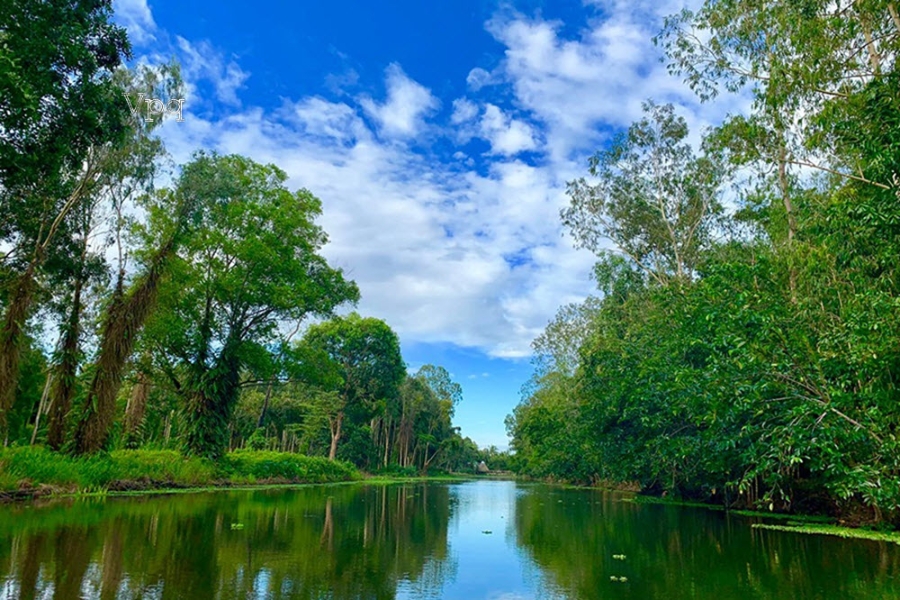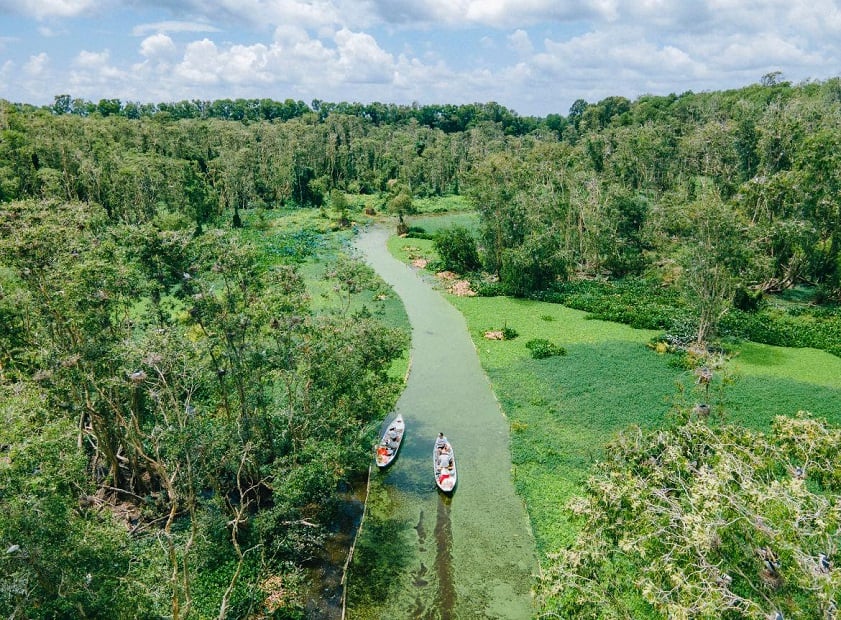Vietnam National Parks – The Mekong Delta, often referred to as the “Rice Bowl” of Vietnam, is a lush and vibrant region teeming with biodiversity. This unique area, where the mighty Mekong River meets the South China Sea, is home to several national parks and nature reserves that protect its rich ecosystems and offer visitors a chance to experience the natural beauty and cultural heritage of southern Vietnam.
1. Tram Chim National Park

Located in Dong Thap Province, Tram Chim National Park is a wetland sanctuary famous for its vast reed beds and seasonal flooded plains. It is an important habitat for the rare sarus crane, one of the tallest flying birds in the world, and many other migratory bird species. Visitors can explore the park by boat, enjoying birdwatching and the peaceful natural scenery. Tram Chim’s wetlands also play a critical role in flood control and water purification for the region.
2. U Minh Thuong National Park

Situated in Kien Giang Province, U Minh Thuong National Park is known for its extensive peat swamp forests, which are relatively rare ecosystems in Southeast Asia. The park supports a diverse range of flora and fauna, including the endangered hairy-nosed otter and several species of primates. It’s a great destination for eco-tourists interested in guided boat tours through the forest canals, wildlife spotting, and learning about the local communities that live in harmony with the forest environment.
3. Tram Chim Nature Reserve

Often confused with the national park of the same name, the Tram Chim Nature Reserve is a protected area focused on preserving the unique wetland habitats of the Mekong Delta. It is a critical breeding site for many fish and bird species and serves as a natural buffer against flooding during the rainy season. Conservation efforts here aim to balance biodiversity protection with sustainable local livelihoods.
4. Lung Ngoc Hoang Nature Reserve

Located in An Giang Province, Lung Ngoc Hoang Nature Reserve is part of the Mekong Delta Biosphere Reserve. The reserve features a mix of tropical forests, wetlands, and seasonal floodplains, providing refuge for various endangered species such as the Asian elephant and several rare bird species. It is also a culturally significant area for the Khmer ethnic minority, offering visitors a glimpse into traditional lifestyles alongside natural exploration.
Why Visit the Mekong Delta’s National Parks and Nature Reserves?
- Biodiversity: The region supports a wide array of plants, birds, mammals, and aquatic life, many of which are endemic or endangered.
- Ecotourism: Sustainable tourism opportunities like boat tours, birdwatching, and guided nature walks allow visitors to experience the environment responsibly.
- Cultural Experience: The parks and reserves are home to diverse ethnic groups such as the Khmer and Hoa, whose traditions and livelihoods are closely linked to the natural landscape.
- Scenic Beauty: From tranquil waterways lined with reeds to dense forests and vibrant wetlands, the natural scenery of the Mekong Delta is breathtaking.
Tips for Visitors
- Visit during the dry season (December to April) for easier access and better wildlife viewing.
- Respect local regulations and wildlife by staying on designated paths and avoiding disturbance to animals.
- Consider hiring local guides to enhance your understanding of the ecology and culture of the area.
- Bring binoculars and a camera to capture the diverse bird species and stunning landscapes.
The national parks and nature reserves of the Mekong Delta offer a unique window into one of Vietnam’s most ecologically important and culturally rich regions. Whether you’re a nature lover, birdwatcher, or cultural enthusiast, exploring these protected areas provides an unforgettable experience of southern Vietnam’s natural heritage.


Leave a Reply